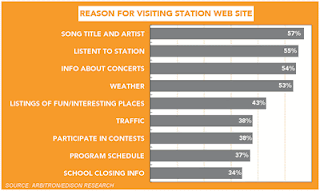
Sono quasi quattrocento pagine ma è una lettura molto interessante per capire il digitale terrestre. L'ITU ha appena rilasciato le Guidelines for the Transition from Analogue to Digital Broadcasting una pubblicazione rivolta alle nazioni in via di sviluppo per favorire la transizione dal broadcasting analogico al digitale e insegnare come sfruttarne i vantaggi, anche in termini di nuova disponibilità di frequenze da assegnare a servizi wireless come Internet. La guida indica due percorsi per la televisione terrestre e quella mobile (citando il caso dell'implementazione del DVB-H in Italia, un "successo" alquanto discutibile). La pubblicazione può essere scaricata qui:
http://www.itu.int/publ/D-HDB-GUIDELINES.01-2010/en. La presentazione è avvenuta nell'ambito della World Telecommunication Development Conference (WTDC-10) in corso a Hyderabd, dove ITU ha anche dimostrato le funzionalità di un software chiamato Spectrum Management System for Developing Countries (SMS4DC). Non è dato sapere se tra queste Nazioni c'è anche la nostra, ma se Agcom è interessata all'SMS4DC può trovarlo qui al costo tutto sommato accettabile di 5.000 franchi.
Digital broadcasting to enhance TV and Internet accessITU Guidelines for digital transition released at World Telecommunication Development ConferenceHyderabad, India, 28 May 2010 - Guidelines to help countries manage their transition from analogue to digital broadcasting were presented yesterday during the ITU World Telecommunication Development Conference (WTDC-10) in Hyderabad, India. Delegates at the Conference also benefited from a hands-on demonstration of ITU’s Spectrum Management System for Developing Countries (SMS4DC).Releasing the guidelines, the Director of ITU’s Telecommunication Development Bureau, Mr Sami Al Basheer Al Morshid said, “The transition to digital broadcasting is a major challenge facing all countries, but in particular, developing and least developed countries. We hope that our members will take full advantage of this very practical set of guidelines designed to help them through the process.” Mr Al Basheer added, “ITU will also help countries implement the guidelines through country-level assistance and regional initiatives.”The transition to digital broadcasting has become an important global issue. It will provide a greater number of channels with higher quality within the same available bandwidth along with advanced applications and features, such as interactivity and electronic programme guides. This transition also frees up spectrum — the so-called “digital dividend” — which can be used for enhanced broadcasting applications and wireless mobile broadband, leading to greater convergence of services. This is a key solution to extend Internet access to currently underserved areas.The guidelines provide information and recommendations on policy, regulation, technologies, network planning, customer awareness and business planning for the smooth transition to Digital Terrestrial Television Broadcasting (DTTB) and the introduction of Mobile Television Broadcasting (MTV). These guidelines are applicable to the GE06 Agreement planning area (corresponding to the geographical region situated to the west of meridian 170° E and north of parallel 40° S, except the territories of Mongolia, and including the Islamic Republic of Iran).“The Guidelines for the Transition from Analogue to Digital Broadcasting” were developed by the ITU Telecommunication Development Bureau with the support of the Korean Communications Commission (KCC), Republic of Korea.The demonstration of SMS4DC — Spectrum Management System for Developing Countries — illustrated how countries can manage their spectrum more efficiently and effectively. A low-cost, entry-level system, it nonetheless includes many features and functions, such as an open-source digital global terrain map, to assist countries in determining the technical and regulatory procedures required to manage spectrum allocated to land, mobile, fixed and broadcasting services.SMS4DC is easily upgradable to accommodate revised ITU procedures and regulations. First launched in 2007, it is now being used by 37 countries.
















